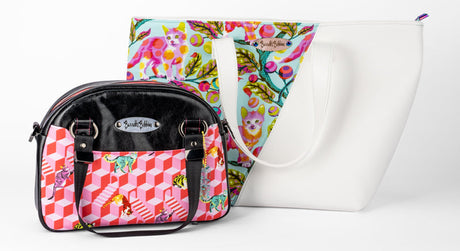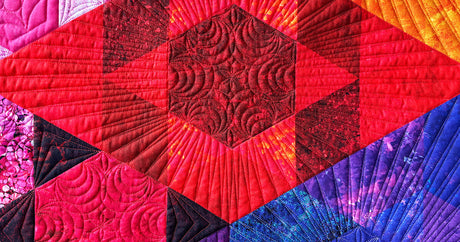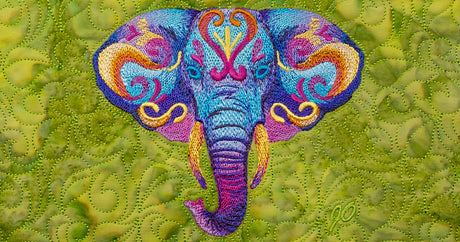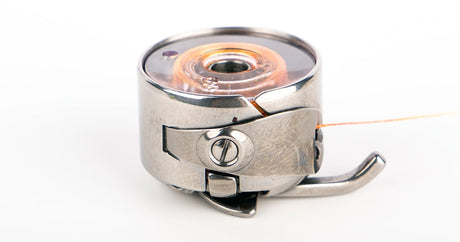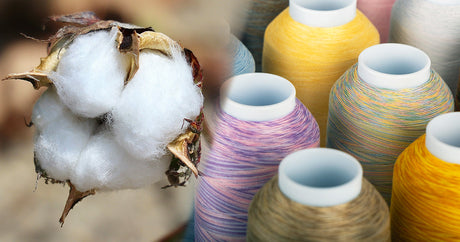At YLI Threads, we’re proud to spotlight hand quilters who bring both heart and skill to their craft. Nancy G. has used our cotton hand quilting thread for more than 25 years and recently stitched a series of sample blocks that demonstrate how the right needle and thread can transform simple designs into something special. Her insights are the kind you only get from time at the frame, and she’s sharing them with us here.
We recently took the opportunity to chat with Nancy to learn more about her approach to hand quilting, from the tools she uses to the lessons she’s learned, and to showcase her beautiful stitched blocks. If you’ve been looking for practical tips or just a bit of stitching inspiration, you’re in the right place.
Why Hand Quilting?
“I love the look and feel of a hand-quilted quilt,” Nancy shared. “It’s softer than machine quilting. I also find it very relaxing to work my way around a quilt design.”
That love of process is something many quilters will relate to. But Nancy also emphasized that success starts before the first stitch. She recommends thinking carefully about your quilt pattern, especially how it will interact with the seams or patchwork beneath.
By planning ahead, you can avoid bulky intersections or uneven stitching paths that might disrupt the rhythm of your hand quilting. Nancy suggests visualizing the quilt top as a landscape. Look for areas where the design can flow smoothly, and consider how the thread color and stitch direction will enhance or distract from the piecing. This thoughtful preparation allows each stitch to feel more intentional, making the quilting process more enjoyable from the very first needle pull.
A Closer Look at Nancy’s Stitched Blocks
We photographed several of Nancy’s sample blocks to show just how different threads behave in practice:
Yellow Fabric Flower Block:
This floral pattern is soft, classic, and beautifully stitched with even tension and consistent stitch length. The warm yellow background offers contrast while letting the threadwork shine.


Red and White Curve Block:
Want to experiment with color? Nancy used five different shades of YLI's Hand Quilting Thread in this bold block, demonstrating how some thread colors blend in, and others stand out, depending on the fabric. The curved stitch pattern adds a modern, dynamic feel.
Spool of Thread Block:
This playful design features a stitched “Y L I” inside a heart, which is a tribute to the threads and company Nancy has trusted for decades.

Nancy’s hand quilting journey is grounded in skill, experience, and a deep appreciation for detail. To bring her quilt samples to life, she used our 40 wt. cotton thread, a go-to choice for hand quilting thanks to its strong, smooth feel and knot- and tangle-free stitching experience. She selected colors that blend beautifully with the fabric, letting the stitches add quiet texture without overpowering the design. Explore our hand quilting thread collection to find the same threads used in Nancy’s work.
Nancy's Tips for Hand Quilters
Q: What do you love most about hand quilting?
A: I love how it slows me down. It lets me enjoy the process and spend time with my quilt in a different way. The stitches are part of the story, and they are quiet stitches. Essential, but usually minimalistic or simple in form. I find this incredibly meditative.
Q: How do you choose your quilting thread?
A: I almost always go with a 40 wt. cotton thread. I want the stitch to feel soft in my hand yet have great strength, and to glide smoothly through the layers of my quilt sandwich without tangling. YLI thread does that beautifully, and the colors help the stitches sink in or stand out, depending on the look I want.
Q: Do you pre-plan your stitch designs or improvise?
A: I usually plan the layout, but the stitch pattern often evolves as I work. The fabric, thread, and seams guide me. I might start with a fan or a crosshatch idea, but I also let the quilt speak for itself.
Q: Any advice for new hand quilters?
A: Don’t rush. Use tools you enjoy, thread you trust, and let yourself learn one stitch at a time. Hand quilting isn’t just about perfect results—it’s about the connection you build with each quilt
Nancy’s Favorite Tools and Techniques
- Thread: Nancy’s top priority is quality. “Strength, no shredding, and no twisting or knotting — that’s what I look for in a hand quilting thread,” she said.
- Needles: She uses size 9 “betweens” for their slim profile and smooth glide. “A larger needle doesn’t go through the fabric as easily.”
- Thimbles: “You’ll get used to them,” Nancy said, noting she now uses both an “under thimble” and a thumb thimble for comfort and speed.
- Stitch Method: Nancy started quilting with the stab stitching technique, but now uses a rocking stitch for smaller, more even results.
- Practice and Peer Learning: “Join a group. Watch others quilt. You’ll pick up so many great tips.”
While Nancy doesn't enter her quilts into shows, she quilts for the pure joy of it. Her story is a reminder that perfection isn’t the goal; it’s the rhythm, the texture, and the satisfaction of working with your hands that make hand quilting so rewarding.
We’re grateful to Nancy for sharing her work and wisdom. Her stitched samples serve as a reference point for other quilters exploring our cotton threads for hand quilting, often choosing a trusted favorite that combines tradition and innovation in every project–our glazed, 40 wt. cotton hand quilting thread.
About YLI's Cotton Hand Quilting Thread
YLI Hand Quilting Thread is a 40 wt. glazed cotton thread made from 100% Egyptian‑grown extra‑long staple cotton. Quilters have trusted this thread for over 20 years because it glides smoothly through fabric without knotting or tangling.
Perfect for all hand quilting stitches, from precision running stitches to durable backstitches, our thread delivers consistent, lint-free, tangle-free performance that hand quilters rely on for beautiful, long-lasting results. Ready to implement these tips?
Find your perfect thread for hand quilting here


